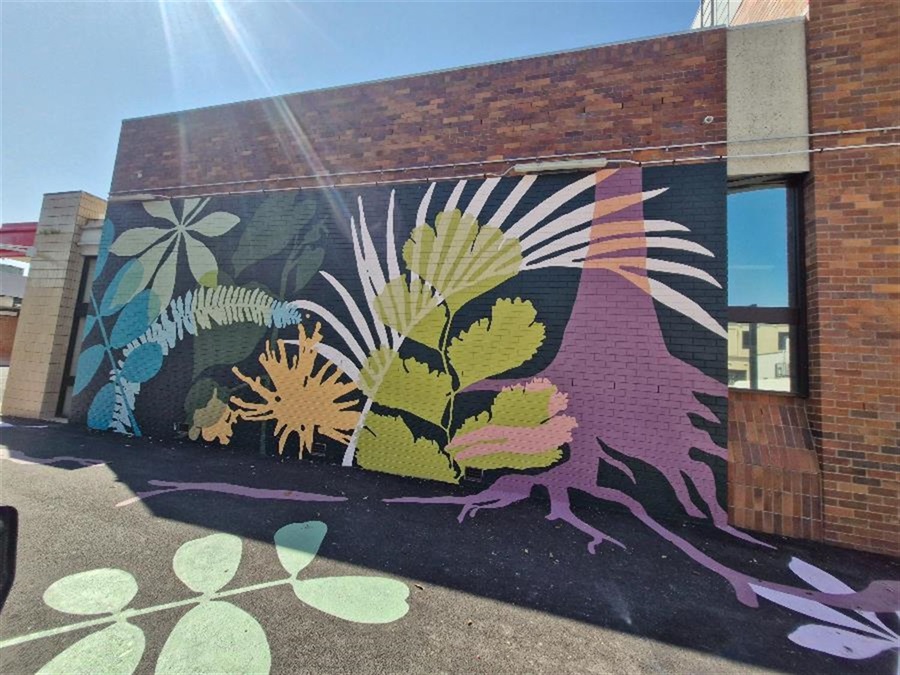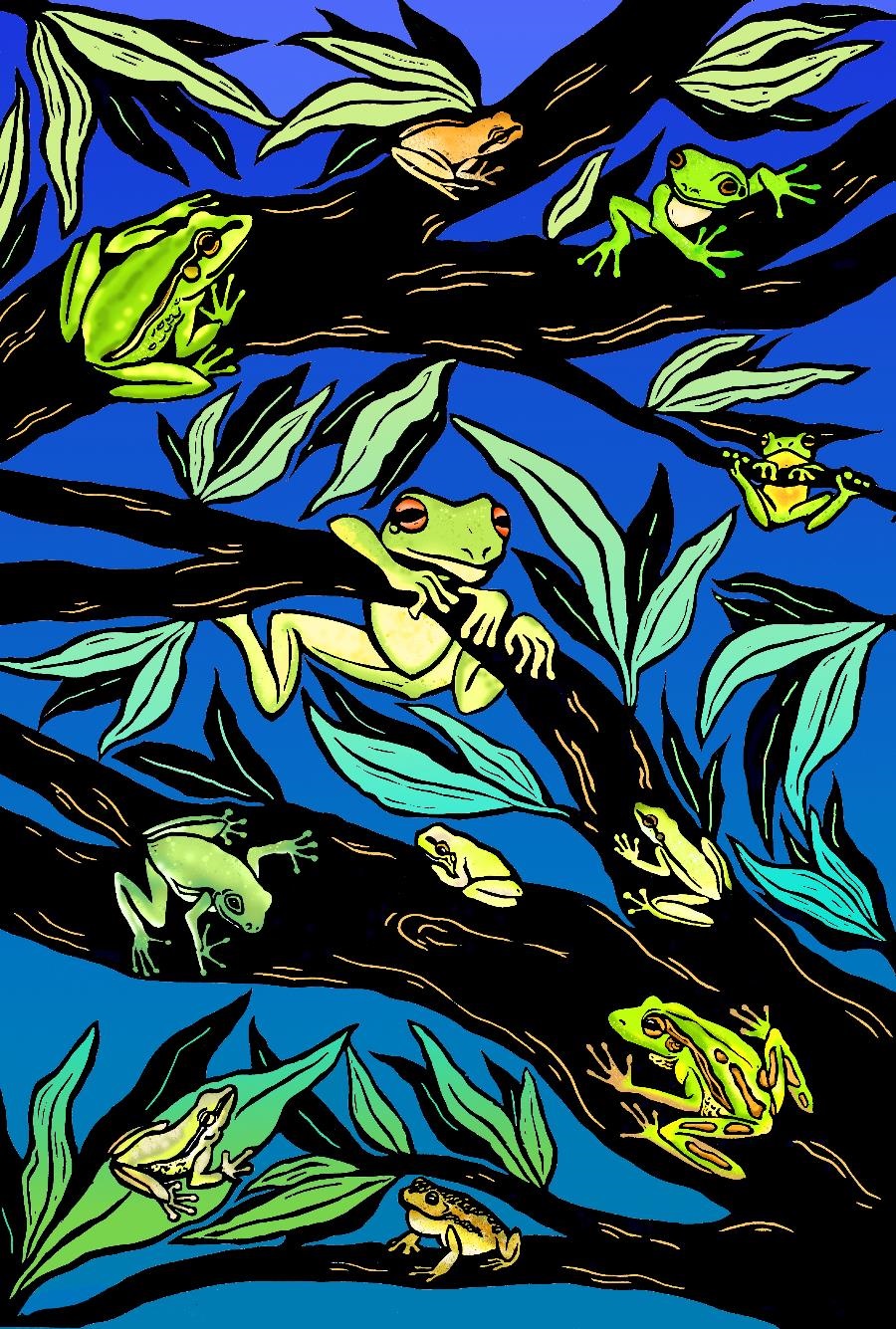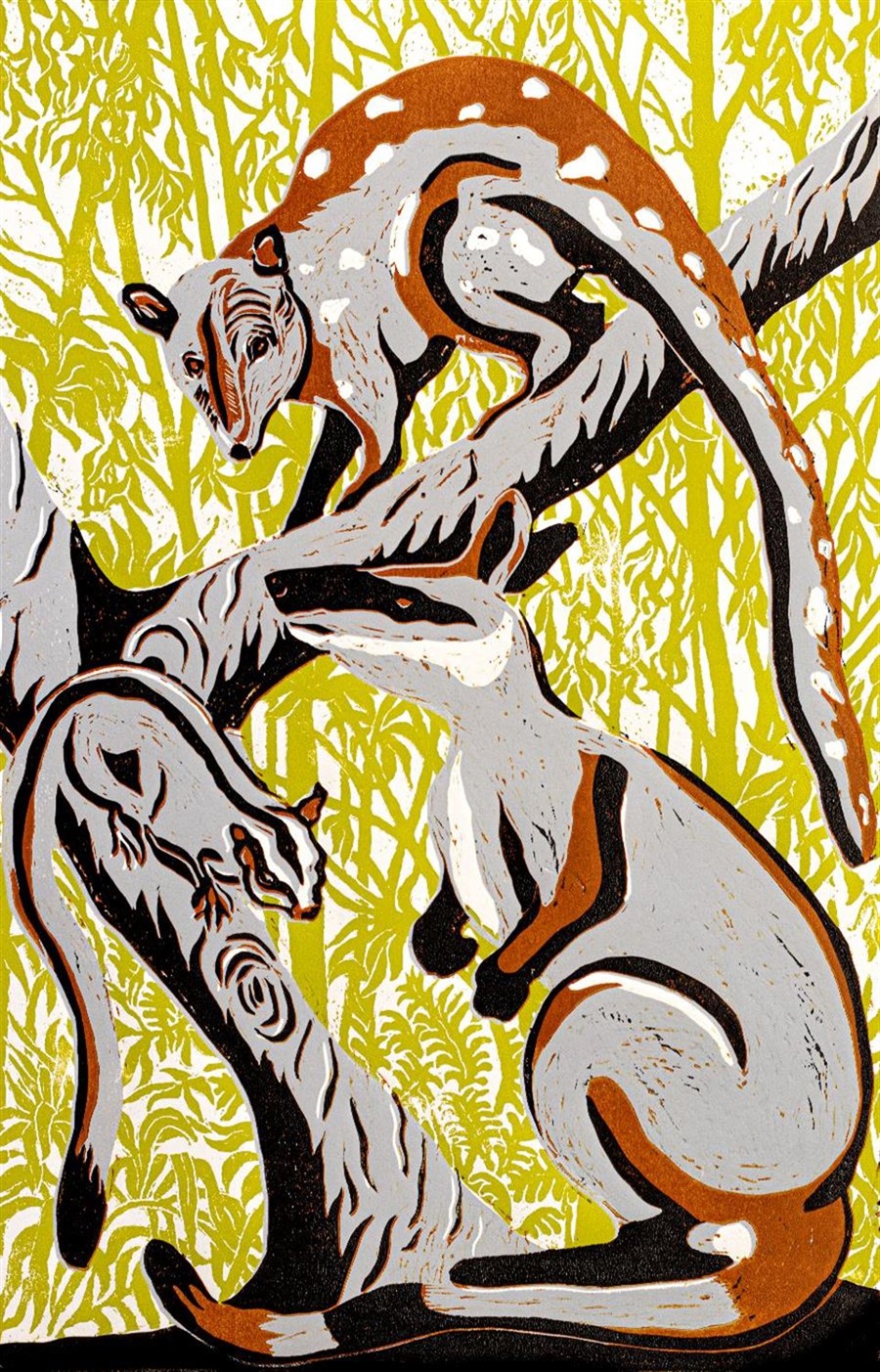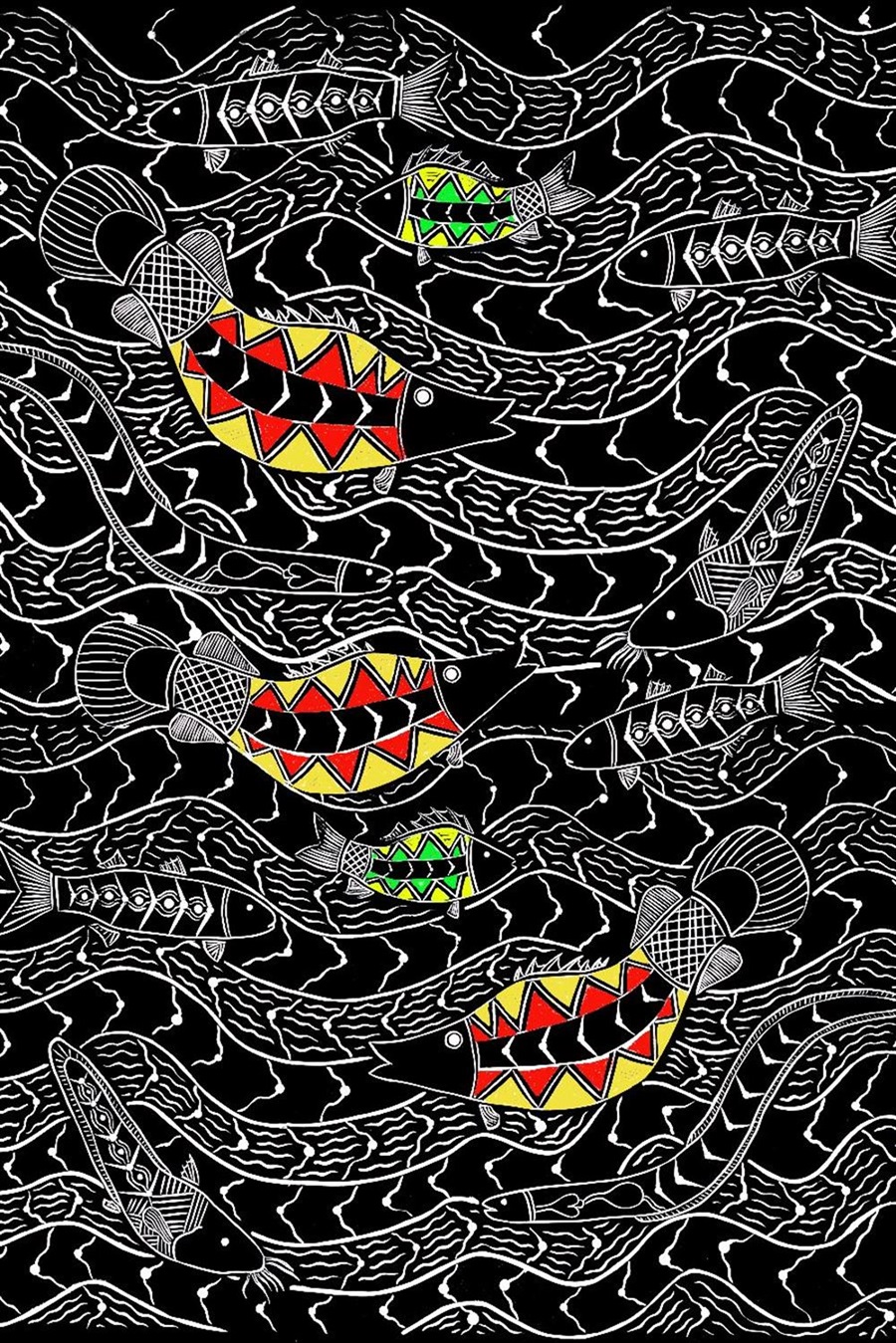Safer Cities Her Way
Lightbox Lane Art
Big Scrub Mural by Stroud de’ Signs

Kate Stroud wanted to create a mural that was unlike the other realism rainforest murals in Lismore. Her abstract approach focuses on the iconic shapes of the native flora of our region and interjects a bright palette bridging the gap between nature and imagination. The botanicals were chosen through community consultation and Kate’s excursions into the surrounding big scrub areas, using field guides to identify species with interesting shapes.
The mural design is also reflected in the sculptural fencing panels at the Harold Fredericks Carpark.
Kate Stroud is a Lismore-based vision hunter, visual communicator, artist, sign writer and large-scale muralist, whose joyful, provocative, and sometimes rebellious works are synonymous with the outspoken and creative spirit of the Northern Rivers region. Her vibrant murals and signs adorn laneways, footpaths, walls, arcades, shopfronts, and the interiors of local businesses. As a fierce advocate for community-led development and a vibrant creative economy, Kate’s work is a constant celebration of identity and survival.
Penelope Sienna

Penelope Sienna is a visual artist based on Bundjalung Country, Lismore, New South Wales. Her practice merges experimental printmaking with diverse mixed media techniques. Deeply inspired by her surroundings, Sienna's work reflects the unique juxtaposition of urban life and the critically endangered Big Scrub rainforest. Through her art, she seeks to foster a profound appreciation for this precious ecosystem, emphasising the impact of human choices on its survival. By highlighting the delicate balance between humanity and nature, Sienna invites viewers to consider their role in protecting the less than one percent of the Big Scrub that remains.
Instagram @pensienna
Elena Matiussi Pimm

Elena’s piece is a mixed-media installation that underscores the vulnerability of frog species in and around the Big Scrub region. Australia's amphibian population is imperilled by the multifaceted threats of climate change, habitat destruction, disease, and pollution. Her lino print showcases a range of notable Australian frogs, including the Golden Bell Frog, Whirring Tree Frog, Eastern Dwarf Tree Frog, Robust Bleating Tree Frog, Red-eyed Tree Frog, Graceful Tree Frog, Wallum Sedge Frog, and Green Tree Frog.
Elena conducted research to accurately identify various frog species and their habitats, including discussions with ecologist Sandy Pimm. The Green Tree Frog (centre) was chosen deliberately as a symbol of hope for Australian amphibians. This species embodies resilience and adaptability, thriving despite environmental pressures and maintaining a robust population. Her artwork aims to not only highlight the plight of these delicate creatures but also to inspire a deeper appreciation and need for urgent action towards conserving their natural habitats.
Instagram @314na.art
Dallas Rae

Dallas Rae has created a multi-plate reduction linocut, a blend of woodcut and linocut techniques. Five layers were printed, each stripping away more of the lino. The piece features three threatened animals from the Northern Rivers: the Brush-tailed rock wallaby, the spotted-tailed quoll, and the squirrel glider. These creatures face endangerment due to land clearing, loss of breeding spaces, and the invasion of feral animals like foxes and cats.
Dallas Rae is a figurative artist specializing in painting, printmaking, and mixed media. Her work delves into environmental issues, especially those concerning Australian wildlife, extinction, and loss. With a focus on figurative and narrative elements, her artwork critically examines environmental and cultural topics, often drawing connections to Australian colonial history. Through her art, she explores the relationships between contemporary environmental challenges and historical events.
Peter Faulkner

A Bundjalung man from the Widjabul clan, Peter’s artwork reflects his saltwater and freshwater people ancestry, and a sense of energy and vibrancy of ancestral cultural ways. He says, “My artwork illustrates community togetherness and contemporary cultural expression. I like striking, simple colours and use them in printmaking, painting and sculpture.” Peter is a visual storyteller sharing ancestry and history of his people. His art is his weapon.

The artists in front of the lightboxes.
Harold Fredericks Carpark Art
Journey Murals by Amarina AARI and The Healing Studio
These murals incorporate local Widjabul Wiabul iconography to welcome the community to Bundjalung Nation. Using bright colours with large images that can be identified from a distance, they depict journey lines with people and animals moving from location to location, surrounded by hills filled with bush tucker. The footpaths meet at a meeting circle.
Amarina Aboriginal Artist Run Initiative is Lismore’s first Indigenous owned and run gallery that hosts exhibitions and workshops by First Nation artists who have a connection to Bundjalung.
The Healing Studio focuses on LGBTIQ+ Sistergirls and Brotherboys, and Aboriginal best practice frameworks to offer talk therapies such as narrative therapy, cognitive behaviour therapy, counselling, and body based therapies (such as somatic and embodiment practices), in conjunction with art based therapies to support the Lismore region.